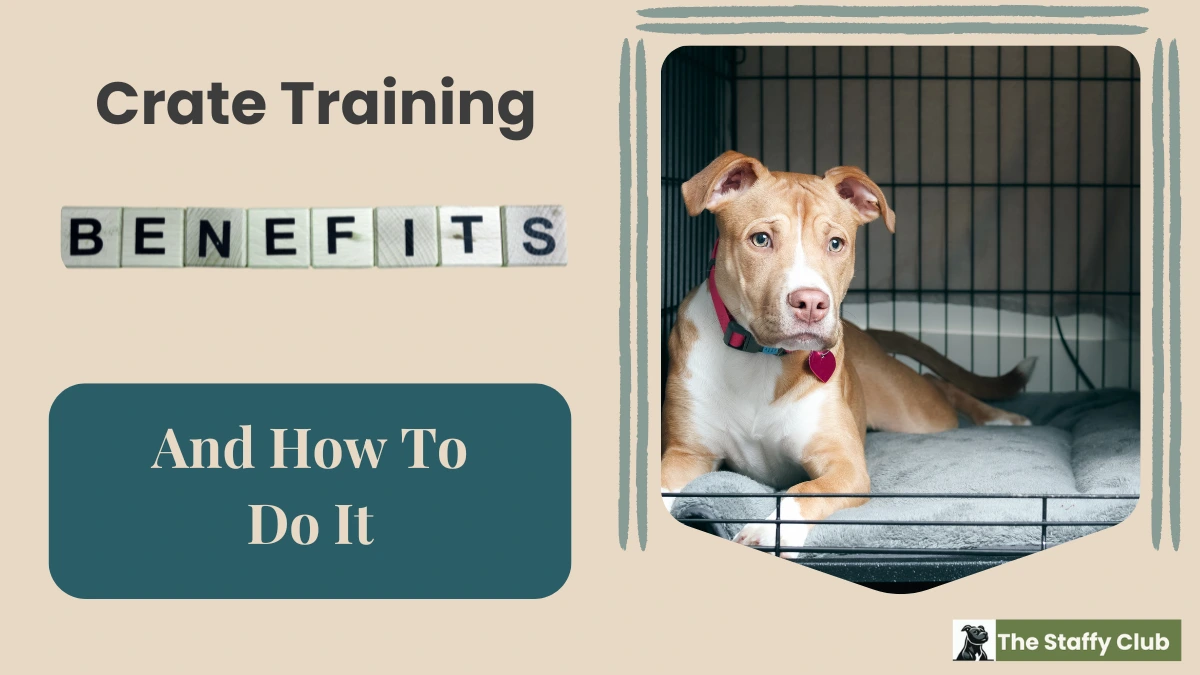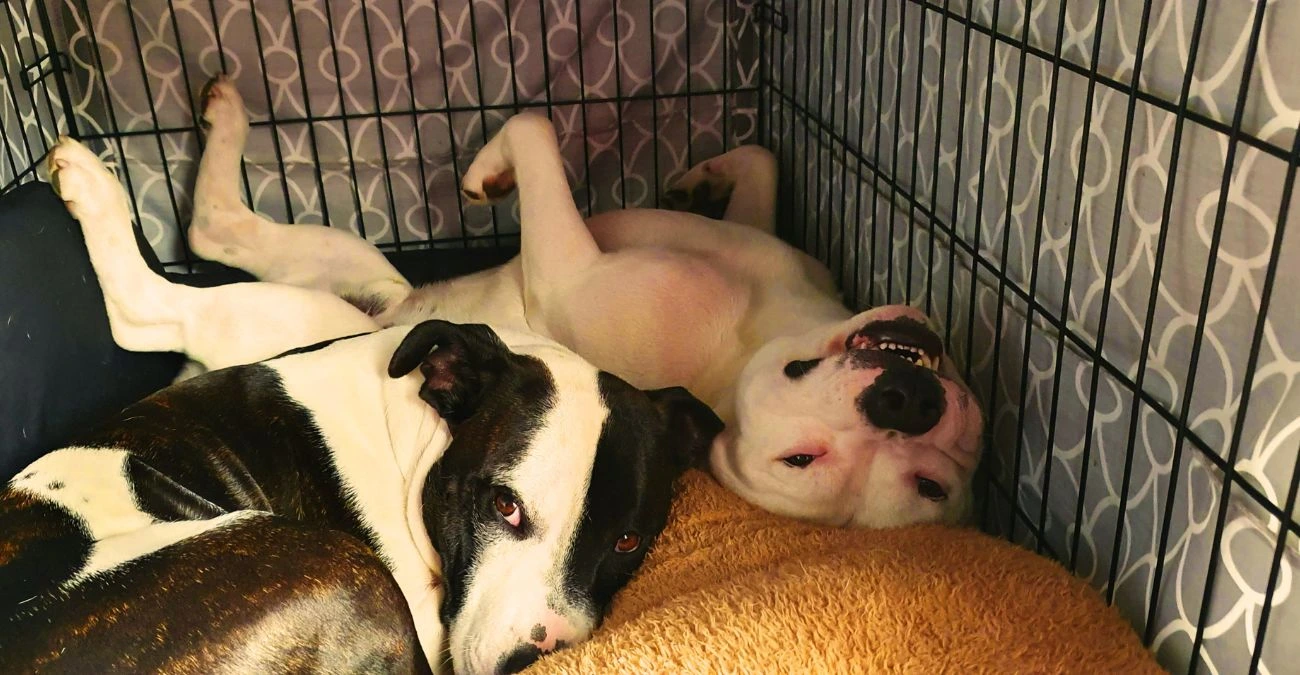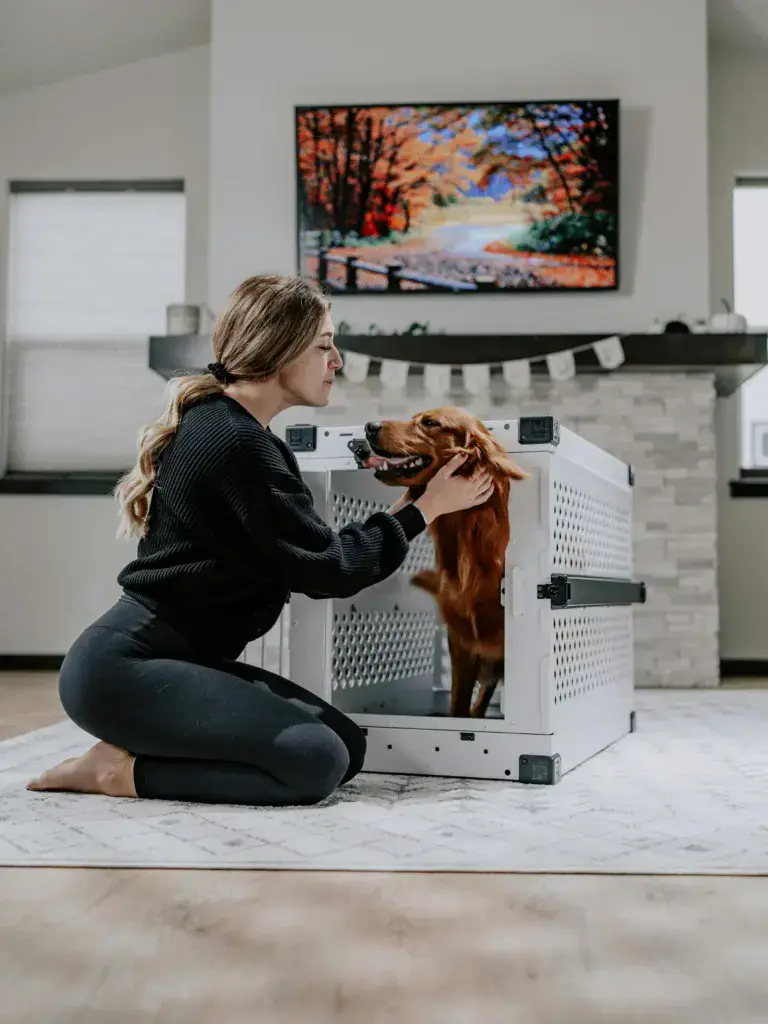Crate Training Benefits And How To Do It

Crate training is more than just discipline — it’s about giving your dog a safe place. Crates help dogs feel secure, like a den. This taps into their instincts. In the wild, dogs seek small, cozy spaces to rest. At home, a crate can provide that same comfort.
Crate training is useful for house-training and travel. It can help avoid accidents and create a routine. It’s also great for reducing stress during travel or trips to an animal hospital miles farther than your local vet.
Some people believe crate training is punishment, but that’s a myth. When done right, a crate is a positive space, not a time-out. It’s a place where your dog can relax and feel safe.
Crate training is more about building a routine and creating security. Done right, it helps both you and your dog.
The Benefits of Crate Training

When trained with positive reinforcement, a crate or kennel can give dogs a sense of security. If a dog is taught to love the crate, it becomes their private and safe place, much like a bedroom for a child. Crate training also helps prevent destructive behavior and teaches dogs to settle and relax”
Source: Sarah Dixon, a certified trainer and owner/services manager at Barks & Recreation.
The 5 benefits you can experience from crate training your dog…
- House Training – A crate becomes a retreat where your dog feels secure.
- Better House Training – The crate helps prevent accidents and builds good habits.
- Improved Behaviour – It reduces destructive habits, like chewing on shoes.
- Promotes Independence – It helps your dog get used to being alone without stress.
- Easier Travel – Whether it’s a road trip or a vet visit, the crate provides comfort.
Easier Travel with Your Dog

When I first heard that crates could make travel easier for dogs, I was skeptical. It seemed more like something you’d do for a cat. After all, who really wants to lock their dog in a crate for a trip?
But here’s the thing: in the car, dogs aren’t always safely restrained. When our dogs were younger, we used a seat belt harness that attached to the car seat belt, keeping them secure and preventing them from moving around. Now that they’re older and bigger Staffies, we secure them in the boot (or trunk). By raising the headrests, they can’t jump through, but alternatives like a dog guard, boot gate, or cargo separator can also do the job.
For longer trips, a crate can be helpful in a car, but it’s especially useful for international or long-distance travel. A crate gives your dog a safe, familiar space, which I’d imagine would be helpful if you need to fly with them.
Whether they travel in the cabin or as cargo, having their crate can offer comfort with familiar blankets or toys. I haven’t flown with a dog myself, but I can see how crates could provide reassurance during long-distance travel.
I was reminded of the importance of crates in travel when thinking about the 2022 rescue efforts to help animals displaced by the war in Ukraine. Charities like FOUR PAWS and Dogs’n’Homes stepped up to assist families fleeing Ukraine, making sure pets were safely transported across borders and, in some cases, even flown to different countries. Crates would be essential for these rescue missions, offering dogs a safe, familiar space during a chaotic and difficult time.
While it’s not something anyone wants to think about, the instability in today’s world reminds me that crate training could help ease travel anxiety, especially if our dogs ever needed to travel long-distance. I can’t imagine the stress the people of Ukraine felt trying to get their dogs out of a conflict zone, but I’m sure those dogs that were crate-trained had a less anxious journey to a safer place.
This brings us to how you can crate train your dog at home so they’re ready for any travel, whether near or far.
How to Crate Train Your Dog
- Choose the Right Crate – The crate should be big enough for your dog to stand, turn around, and lie down comfortably. If your dog has low confidence, situational anxiety can make the transition more difficult. I find the best dog crates for anxiety to be ones that are den-like, in that, a cover can be over it, blocking out all distractions.
- Introduce the Crate Slowly – Let your dog explore the crate at their own pace. Leave the door open, and use treats and crate-safe dog toys to create positive associations. Learn more about: What to Put in a Dog Crate
- Make It Comfortable – Add bedding and durable dog toys to make the crate inviting. It should feel like their own little space.
- Use Positive Reinforcement – Reward your dog when they enter the crate calmly. This helps them associate it with good things happening.

- Establish a Routine – Set regular times for crate sessions to build consistency. Routine is key for your dog’s comfort. When we were first introducing the Midwest dog crate with the cover to our two Staffies, we used what I like to refer to as “Quiet Time Training,” turning it into an event of the day.
- Be Patient – Some dogs may be hesitant at first. Stay calm, don’t force the issue, and use lures to get your dog to go to the crate. They will adjust over time.
Common Crate Training Challenges
Crate training isn’t always easy. Some dogs may show signs of distress, like whining or barking. If this happens, try to figure out the cause. Maybe they’re hungry, need a bathroom break, or just need more exercise.
Separation anxiety is another challenge. Dogs can get nervous when left alone, and may need guidance to ease separation anxiety in dogs. Start by leaving them in the crate for short periods and gradually increase the time.
Avoid common mistakes like crating your dog for too long or not using enough praise or positive reinforcement techniques. The crate should never be a punishment — it’s their safe space.
If you can’t solve the issues on your own, don’t be afraid to ask for help. A professional trainer can offer ideas and new solutions, even if it’s the trainer at local dog socialisation classes rather than a dog behaviour specialist.
Final thoughts
If you’re worried about crating your dog when you’re not around, start by making it part of your daily routine. While you’re home, introduce the crate and help your dog get used to it. The goal is to make them comfortable and relaxed going into it. Before long, you’ll realise that the real benefit of crate training is peace of mind.
You’ll be able to go about your day knowing your dog is safely crated, surrounded by comforting items, and maybe even soothing music for dogs with anxiety to help keep them calm. It’s a far cry from the stress of wondering if they’re chewing things they shouldn’t, tearing up the mail, barking at every passerby, or turning your sofa cushions into chew toys.






